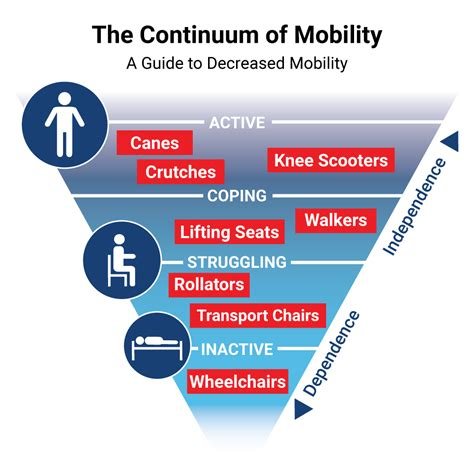Health Risks Related to Low Mobility in Women
As women, staying active and mobile is crucial for maintaining overall health and well-being. Unfortunately, today’s sedentary lifestyle has led to an increasing number of women experiencing low mobility, which in turn, poses significant health risks. In this blog post, we will delve into the various health concerns related to low mobility in women, including cardiovascular problems, musculoskeletal issues, increased risk of obesity, mental health concerns, and hormonal imbalance. Understanding these health risks is essential for taking proactive steps to prevent them. We will also explore the impact of a sedentary lifestyle on women and provide practical ways to improve mobility and overall health. By educating ourselves about these potential health risks and taking steps to incorporate more movement into our daily lives, we can work towards maintaining a healthier, more active lifestyle. Join us as we uncover the importance of mobility for women’s health and learn how to prevent and address the health risks associated with low mobility.
Understanding the Health Risks
Living a sedentary lifestyle can lead to numerous health risks, including cardiovascular problems, musculoskeletal issues, increased risk of obesity, and mental health concerns. It is important to understand the impact of low mobility on overall health and well-being.
Cardiovascular problems such as heart disease and high blood pressure are more prevalent in individuals who lead sedentary lifestyles. Lack of physical activity can lead to poor circulation and a higher risk of developing blood clots, which can be life-threatening.
Musculoskeletal issues caused by inactivity include muscle atrophy, joint stiffness, and decreased bone density. Regular movement and exercise are crucial in maintaining bone and muscle strength, reducing the risk of fractures and osteoporosis.
Increased risk of obesity and weight gain are common in individuals who do not engage in regular physical activity. Sedentary behavior can lead to a decrease in metabolism and an increase in visceral fat, which can contribute to a wide range of health issues.
Impact of Sedentary Lifestyle on Women
Many women lead sedentary lifestyles due to the demands of work, family, and other responsibilities. This lack of physical activity can have a significant impact on their overall health and well-being.
One of the most concerning effects of a sedentary lifestyle on women is the increased risk of cardiovascular problems. Sitting for extended periods can lead to poor circulation, high blood pressure, and an elevated risk of heart disease. This is particularly concerning for women, as cardiovascular issues are a leading cause of mortality among females.
Additionally, a sedentary lifestyle can also result in musculoskeletal issues for women. Lack of movement and physical activity can lead to muscle stiffness, joint pain, and decreased flexibility. This can not only impact their physical health but also hinder their ability to perform daily tasks and activities.
Furthermore, prolonged sitting and inactivity can lead to an increased risk of obesity and weight gain for women. A sedentary lifestyle can slow down metabolism, leading to an accumulation of excess body fat. This can not only affect their physical appearance but also increase the risk of developing obesity-related health conditions such as diabetes and metabolic syndrome.
Cardiovascular Problems and Low Mobility
Cardiovascular problems are a serious health concern that can be exacerbated by low mobility and sedentary lifestyle. Lack of physical activity can lead to a buildup of plaque in the arteries, which can eventually lead to heart disease and stroke. When the body remains inactive for long periods of time, it puts a strain on the heart and can lead to high blood pressure and increased risk of heart attack.
Moreover, low mobility can also lead to poor circulation, which can further contribute to cardiovascular issues. When the muscles are not regularly engaged through movement, the blood flow to the heart and other vital organs becomes compromised, increasing the risk of blood clots and other cardiovascular complications.
It is important to address low mobility and its impact on cardiovascular health by incorporating regular physical activity into our daily routines. Simple activities such as walking, stretching, and low-impact exercises can help improve circulation and strengthen the heart, reducing the risk of cardiovascular problems.
By prioritizing mobility and engaging in regular physical activity, individuals can significantly lower their risk of cardiovascular issues and improve their overall heart health.
Musculoskeletal Issues Caused by Inactivity
When we lead a sedentary lifestyle and spend prolonged periods sitting or lying down, it can have detrimental effects on our musculoskeletal system. Lack of physical activity can lead to the weakening of muscles, especially in the back and lower body, which in turn can result in poor posture and back pain. Strong muscles are crucial in maintaining good posture and supporting the spine, so when these muscles become weak due to inactivity, it can lead to a variety of issues.
Furthermore, inactivity can also result in decreased bone density, making the bones more susceptible to osteoporosis and fractures. Weight-bearing exercise, such as walking or weight lifting, is essential for maintaining healthy bones and preventing bone loss. When we fail to engage in these types of activities, our skeletal health is put at risk.
Additionally, inactivity can lead to joint stiffness and decreased flexibility, making it more difficult to perform everyday activities and increasing the risk of injuries. Stretching exercises and regular movement are necessary to keep the joints supple and maintain a full range of motion. Without these activities, the musculoskeletal system becomes compromised.
In conclusion, it’s evident that inactivity can have significant negative effects on the musculoskeletal system. To prevent these issues, it’s important to incorporate regular physical activity into our daily lives and make an effort to avoid prolonged periods of sitting or inactivity.
Increased Risk of Obesity and Weight Gain
Obesity and weight gain are serious health concerns that can have a significant impact on an individual’s overall well-being. When physical activity is limited and sedentary behavior is prevalent, the risk of obesity and weight gain is greatly increased. This is because the body is not expending the necessary energy to maintain a healthy weight, leading to an imbalance between caloric intake and caloric expenditure.
Furthermore, a lack of regular exercise can contribute to a slower metabolism, making it more difficult for the body to burn off excess calories. As a result, individuals may find themselves gaining weight more easily, especially when their dietary habits remain unchanged. The combination of inactivity and poor dietary choices can create a dangerous cycle that leads to obesity and weight gain.
In addition, sedentary lifestyle is often associated with increased stress and emotional eating, which can further contribute to weight gain. Many individuals turn to food for comfort and stress relief, particularly when they are not engaging in regular physical activity to manage their stress levels. This emotional component of weight gain can be a significant challenge to overcome for individuals with a sedentary lifestyle.
Overall, the increased risk of obesity and weight gain associated with a sedentary lifestyle underscores the importance of incorporating regular physical activity into one’s daily routine. By making conscious efforts to increase mobility and engage in regular exercise, individuals can reduce their risk of obesity and weight gain, while also benefiting their overall health and well-being.
Mental Health Concerns from Lack of Mobility
One major concern that arises from lack of mobility is the impact it can have on mental health. When individuals are not able to engage in regular physical activity, it can lead to feelings of depression and anxiety. The lack of movement and exercise can leave individuals feeling isolated and trapped, which can significantly impact their overall well-being.
Furthermore, the absence of physical activity can also lead to a decrease in endorphin production, which are the body’s natural mood lifters. This can further contribute to feelings of low mood and overall mental health concerns.
Individuals who are immobile may also experience a decrease in self-esteem and confidence as a result of their limited physical abilities. This can lead to a decline in their mental well-being and overall happiness.
It is important to recognize the impact lack of mobility can have on mental health in order to address and prevent these concerns. Implementing strategies to promote movement and physical activity is crucial in maintaining both physical and mental well-being.
Hormonal Imbalance and Low Mobility
One of the lesser-known impacts of leading a sedentary lifestyle is the effect it can have on hormonal balance. When the body is not regularly engaged in physical activity, it can lead to disruptions in hormone levels, particularly in women. Hormonal imbalance can result in a range of symptoms, including irregular periods, weight gain, fatigue, and mood swings.
Low mobility can lead to an increase in stress hormone levels, such as cortisol, while also impacting the production of other crucial hormones like estrogen and progesterone. These imbalances can have far-reaching effects on a woman’s overall health, contributing to an increased risk of conditions such as polycystic ovary syndrome (PCOS) and infertility.
Furthermore, hormonal imbalance can exacerbate the impact of a sedentary lifestyle, creating a vicious cycle that is challenging to break. The lack of physical activity can disrupt hormone levels, while hormonal imbalances can further reduce a woman’s motivation and ability to engage in regular exercise, perpetuating the negative effects on both physical and mental well-being.
To address this issue, it is essential for women to prioritize improving their mobility and incorporating regular physical activity into their daily routines. By engaging in exercises that promote mobility, such as yoga, pilates, or simple daily walks, women can help regulate their hormone levels, improve circulation, and support overall hormonal balance. These activities also have the added benefit of reducing stress and boosting mood, providing a holistic approach to addressing both hormonal imbalance and low mobility.
Prevention and Ways to Improve Mobility
Improving mobility is essential for maintaining overall health and preventing a host of health issues. A sedentary lifestyle can contribute to decreased mobility, which can lead to a variety of health problems.
One way to prevent decreased mobility is to incorporate regular physical activity into your daily routine. This can include activities such as walking, swimming, or yoga. By engaging in regular exercise, you can improve your flexibility, strength, and balance, which are all important factors for maintaining mobility.
Another important aspect of preventing decreased mobility is to maintain a healthy weight. Excess weight can put added stress on your joints and muscles, making it more difficult to move around comfortably. By following a balanced diet and exercising regularly, you can prevent weight gain and improve your overall mobility.
In addition to physical activity and maintaining a healthy weight, it’s important to address any existing musculoskeletal issues. This may involve working with a physical therapist or chiropractor to develop a treatment plan that can improve your mobility and reduce any pain or discomfort you may be experiencing.
Frequently Asked Questions
What are the health risks related to low mobility in women?
Low mobility in women can lead to various health risks such as cardiovascular problems, musculoskeletal issues, increased risk of obesity, mental health concerns, and hormonal imbalance.
How does a sedentary lifestyle impact women’s mobility?
A sedentary lifestyle can lead to decreased muscle strength and flexibility, reduced bone density, and increased risk of obesity, all of which contribute to low mobility in women.
What are the cardiovascular problems associated with low mobility in women?
Low mobility in women can lead to an increased risk of heart disease, high blood pressure, and stroke due to lack of regular physical activity.
What musculoskeletal issues can be caused by inactivity in women?
Inactivity can lead to muscle atrophy, joint stiffness, and reduced flexibility, resulting in musculoskeletal issues such as back pain, osteoporosis, and arthritis in women.
How does low mobility increase the risk of obesity and weight gain in women?
Low mobility decreases the number of calories burned, leading to weight gain and increased risk of obesity in women who do not engage in regular physical activity.
What mental health concerns can arise from lack of mobility in women?
Lack of mobility can contribute to feelings of anxiety, depression, stress, and decreased overall mental well-being in women.
How does hormonal imbalance relate to low mobility in women?
Low mobility can disrupt hormone levels in women, leading to irregular menstrual cycles, decreased bone density, and increased risk of conditions such as polycystic ovary syndrome (PCOS).






